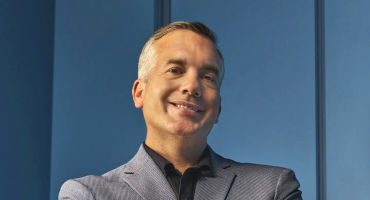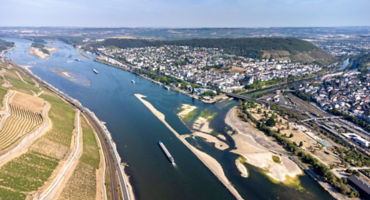- Lead Researcher
Skip to main content
- Funds
- Insights
- Capabilities
- About Us
- My Account
The views expressed are those of the authors at the time of writing. Other teams may hold different views and make different investment decisions. The value of your investment may become worth more or less than at the time of original investment. While any third-party data used is considered reliable, its accuracy is not guaranteed. For professional, institutional, or accredited investors only.
A climate-change framework for multi-asset portfolios
Whether investors are interested in holistically incorporating climate objectives into their portfolios or simply want to better understand different climate-aware investment options and their potential trade-offs, our three-pillar framework can help.
Our Investment Strategy team has generated capital market assumptions (CMAs), including return, risk and correlation metrics, for many years. They play an important role in our asset allocation process and are subject to ongoing research and enhancements. In this paper, we detail one of the most significant changes in our CMAs to date: a comprehensive effort to integrate climate-related inputs, including physical and transition risks, into the process.
We had a simple but important philosophical starting point for this work: we believe climate change impacts investment outcomes. It impacts macro-level variables, such as GDP growth; company-level dynamics, such as costs and future company activity; and decisions about regulation and fiscal policy. These, in turn, all impact asset prices.
The goal of this paper is to outline our approach to integrating climate change and its complex and wide-ranging effects into our CMA process, an effort conducted in collaboration with our Climate and ESG teams, as well as our partners at the Woodwell Climate Research Center. Specifically, we offer an overview of our CMA process, our climate risk methodology and the expected impact of these changes at the asset-class level.
Our CMA process follows a classic building-block approach in which the components of total return — income, growth and valuation — are forecast independently. We use a number of forecast horizons, but for the purposes of this paper, we will focus on our intermediate horizon — i.e., 10 years. At the heart of the approach is an assumption that macro variables (e.g., GDP, inflation) and fundamental variables (e.g., EPS growth, credit losses) each have a bearing on total return.
The macro channel is often the most direct, with any deviations in the inputs flowing immediately through into our CMAs. For example, lower real GDP expectations as a result of climate variables will decrease our estimates of terminal yields for fixed income and revenue growth for equities. The fundamental channel is more nuanced and complex, and requires a larger set of assumptions — to estimate the impact of climate variables on corporate profit margins or credit default/recovery rates, for instance.
With this as our starting point, we first needed a framework for thinking about the climate inputs that should be incorporated into the CMA process. As shown in Figure 1, we have attempted to quantify and incorporate both transition and physical risks.
Given the complexities and variations in the categories of climate risk, we employed two distinct approaches to estimate…
To read more, please click the download link below.
Experts




Picking the right building blocks for a climate-aware portfolio
Continue readingA blueprint for building climate-aware multi-asset portfolios
Continue readingURL References
Related Insights
Stay up to date with the latest market insights and our point of view.

WellSaid: The economic significance of biodiversity
In this short clip from his WellSaid podcast interview, Dr. Zach Zobel of Woodwell Climate Research Center discusses the economic importance of coral reefs — lynchpins of marine biodiversity and vital to fishing, tourism, and other industries.

Climate resiliency factor: Helping asset owners go “long” climate change
We aim to offer asset owners an intuitive way to integrate climate risks into their portfolios and shift their expected return profile for better potential outcomes.

Will emerging Asia leapfrog the energy transition?
Decarbonizing while maintaining economic growth presents tremendous challenges for developing countries in Asia. Is technological innovation the solution?

How can impact investing help address the water scarcity challenge?
In acknowledgement of World Water Day, Louise Kooy-Henckel, Joy Perry and Paul Skinner highlight impact investing can help to address the world's water and sanitation crises.

Perspectives on today’s alternative investment environment
Take a quick tour of the alternative investment environment with investors from across our macro research and hedge fund teams, as they explore the geopolitical landscape, macro volatility, and key trends like climate-change adaptation and digital tokenization.

Equity investing with a thematic lens: Three game changers for 2023
Head of Investment Research Mary Pryshlak and Equity Portfolio Manager Tim Manning highlight their strongest convictions across global equity markets heading into 2023.


URL References
Related Insights